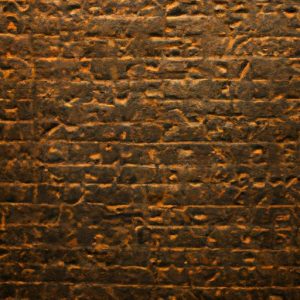Have you ever wondered how long your writing samples should be? Whether you’re a student, a professional, or a creative writer, determining the ideal length for your writing samples is crucial. After all, your writing samples often act as a window into your skills and competence. But how do you strike the right balance? Join me as we explore the importance of writing samples and uncover the significance of finding the perfect length.
In various fields, such as academia, professional settings, and creative industries, writing samples play a vital role in showcasing your abilities. They act as tangible evidence of your expertise, allowing potential employers, clients, or academic institutions to assess your skills firsthand. However, one key aspect that often perplexes many individuals is determining how long their writing samples should be.
But why is the length of a writing sample so important? Well, it’s simple. The length of your writing sample can directly impact the reader’s perception of your work. Too short, and your sample may not adequately demonstrate your abilities. Too long, and it might overwhelm your audience or fail to hold their attention. Striking the right balance is crucial to ensure that your writing sample effectively captures your skills and leaves a lasting impression.
In this article, we will delve into the world of writing samples and explore industry-specific guidelines, tailored approaches for online platforms, and tips for effective editing. By the end, you’ll have a clear understanding of how to craft writing samples that are not only captivating but also perfectly tailored to your audience’s expectations.
So, if you’re ready to unravel the mystery of the ideal writing sample length, let’s dive in!
Factors to Consider in Determining Length
When it comes to deciding the length of your writing sample, several factors come into play. By considering these factors, you can ensure that your sample is tailored to meet the specific needs and expectations of your audience. Let’s examine these factors in detail:
A. Purpose of the Writing Sample
Before determining the length of your writing sample, it’s essential to understand its purpose. Are you submitting a sample to showcase your research skills? Or perhaps you’re providing a writing sample to demonstrate your ability to craft persuasive arguments. The purpose of your writing sample will guide the length you should aim for.
For example, if you’re applying for an academic position, a longer writing sample that showcases your research capabilities may be appropriate. On the other hand, if you’re submitting a writing sample for a journalistic role, a shorter, more concise sample that highlights your ability to convey information succinctly may be preferred.
B. Target Audience and Their Preferences
Knowing your target audience is crucial in determining the length of your writing sample. Consider the expectations and preferences of the individuals who will be reviewing your sample. Are they looking for comprehensive, in-depth analysis, or do they prefer concise and to-the-point writing?
For instance, if you’re applying for a position in a tech startup, the hiring manager may appreciate a shorter, well-structured writing sample that demonstrates your ability to communicate complex ideas concisely. However, if you’re submitting a writing sample for a scholarly journal, a more extensive and detailed sample may be expected.
C. Specific Requirements of the Application or Submission
In some cases, the application or submission guidelines may provide specific instructions regarding the length of the writing sample. It’s crucial to carefully review these guidelines and adhere to them to ensure your submission is considered.
Pay attention to any word count limitations or recommendations provided. Exceeding or falling short of the specified length may reflect poorly on your attention to detail and ability to follow instructions.
By considering the purpose of your writing sample, the preferences of your target audience, and the specific requirements of the application or submission, you can confidently determine the optimal length for your writing sample. Remember, tailoring your sample to meet these factors will greatly enhance your chances of leaving a positive impression on those who review your work.
Industry-Specific Guidelines
When it comes to writing samples, different industries have their own unique expectations and guidelines. Let’s explore the industry-specific recommendations for academic, professional, and creative writing samples to help you determine the ideal length for each.
A. Academic Writing Samples
-
Length recommendations for research papers, essays, and dissertations:
In the academic realm, the length of your writing sample will vary depending on the specific requirements of your institution or application. Research papers and essays generally range from 1500 to 5000 words, while dissertations can extend to tens of thousands of words. It’s essential to carefully review the guidelines provided by your academic institution or potential program to ensure your writing sample aligns with their expectations.
-
Considerations for including extracts or full-length pieces:
When submitting academic writing samples, you may have the option to include extracts or full-length pieces. If the guidelines permit, selecting an extract that showcases your ability to present a clear argument or convey complex ideas concisely can be beneficial. However, in some cases, providing a full-length piece may be necessary to demonstrate your research skills and depth of analysis.
B. Professional Writing Samples
-
Ideal length for resumes, cover letters, and email correspondences:
In the professional world, brevity is often valued. When it comes to resumes, keeping them concise and focused is crucial. Aim for a one- to two-page resume, highlighting your most relevant experiences and skills. Cover letters should be succinct, ranging from 250 to 400 words, effectively conveying your interest and qualifications for the position. Similarly, when crafting email correspondences, keeping them concise and to the point is essential to maintain professionalism and respect the recipient’s time.
-
Formatting guidelines for writing samples in business or corporate settings:
Depending on the industry, business or corporate settings may require specific formatting guidelines for writing samples. Pay attention to any instructions provided by potential employers or clients. Formatting requirements may include specific font styles and sizes, margins, or file formats. Adhering to these guidelines demonstrates your attention to detail and professionalism.
C. Creative Writing Samples
-
Recommended length for short stories, poems, and flash fiction:
Creative writing samples provide an opportunity to showcase your imagination and storytelling abilities. For short stories, a length of 1500 to 5000 words is typical. When it comes to poetry, a single poem or a collection of poems totaling one to three pages is often sufficient. Flash fiction, which emphasizes brevity, usually falls within a range of 300 to 1000 words. Remember, the focus should be on quality rather than quantity, capturing the essence of your creativity within the given word count.
-
Tips for showcasing creativity within a specific word count:
Writing within specific word limits can be challenging but also rewarding. To make the most of your creative writing samples, consider employing techniques such as vivid imagery, concise yet impactful dialogues, and well-developed characters. By focusing on the essentials and using literary devices effectively, you can create a powerful and engaging piece, even within a limited word count.
By understanding the industry-specific guidelines for writing samples, you can tailor your work to meet the expectations of academic institutions, employers, or clients. Remember, while these guidelines provide a starting point, it’s essential to review specific requirements and adapt your writing samples accordingly.
Tailoring Writing Samples for Online Platforms
In today’s digital age, it’s crucial to adapt your writing samples to cater to online readers’ preferences. With the vast amount of content available on the internet, capturing and retaining the attention of your audience has become more challenging than ever. To ensure your writing samples stand out and make an impact, consider the following factors:
A. Importance of Adapting to Online Readers’ Preferences
Online readers have different reading habits and expectations compared to traditional print readers. They often skim through content, searching for information that is relevant and engaging. Therefore, it’s essential to tailor your writing samples to cater to their preferences. But how can you do that?
Firstly, focus on creating scannable content. Break your writing samples into smaller paragraphs, use subheadings, and incorporate bullet points or numbered lists when appropriate. This allows readers to quickly navigate through your writing and find the information they’re looking for.
Secondly, make use of engaging and visually appealing elements. Incorporate images, infographics, or relevant multimedia that complement your writing. Visual content not only enhances the overall reading experience but also helps communicate your message more effectively.
B. Word Count Guidelines for Blog Posts, Articles, and Website Content
When it comes to writing for online platforms, word count guidelines can vary depending on the specific platform and purpose. For blog posts, it’s common to aim for a word count of around 1,000 to 2,000 words. This provides enough space to delve into a topic while keeping readers engaged.
For articles published on reputable websites or online publications, the word count might range from 500 to 1,500 words. However, always consider the guidelines provided by the platform you’re submitting your writing sample to, as they may have specific requirements.
Website content, on the other hand, should be concise and to the point. Aim for shorter paragraphs and sentences, conveying information efficiently. The word count for website content can vary depending on the page’s purpose but generally falls within the range of 300 to 800 words.
C. Structuring Writing Samples for Optimal Readability and Engagement
To ensure optimal readability and engagement, structure your writing samples in a way that guides the reader through the content smoothly. Start with a compelling introduction that hooks the reader’s attention, followed by well-organized paragraphs that build upon your main points.
Use subheadings to break down your writing into sections, making it easier for readers to navigate and find the information they need. Additionally, incorporate relevant keywords throughout your writing to enhance search engine optimization (SEO) and increase the visibility of your samples online.
By tailoring your writing samples to online platforms, adapting to readers’ preferences, and adhering to word count guidelines, you can create impactful and engaging content that resonates with your target audience. So, let’s dive into the next section and uncover valuable tips for effective editing and proofreading!
Tips for Effective Editing and Proofreading
A. Importance of Concise and Error-Free Writing Samples
Crafting writing samples that are concise and free from errors is paramount to leaving a lasting impression on your audience. Conciseness ensures that your message is clear and easily digestible, preventing your readers from losing interest or becoming overwhelmed. Error-free writing samples demonstrate your attention to detail and professionalism, instilling confidence in your abilities.
To achieve conciseness, focus on eliminating unnecessary words or phrases that do not contribute to the overall message. Trim down lengthy sentences and paragraphs, removing any repetitive or redundant information. This will help your writing sample flow smoothly and keep your readers engaged.
To ensure error-free writing samples, take the time to thoroughly proofread your work. Check for spelling, grammar, and punctuation errors, as well as inconsistencies in formatting or style. Consider using grammar and spell-checking tools to assist you in catching any mistakes that may have slipped through the cracks.
B. Techniques for Condensing Longer Samples Without Losing Quality
When faced with the challenge of condensing a longer writing sample, it’s important to maintain the quality and essence of your work. Here are some techniques to help you achieve this:
-
Focus on the main points: Identify the key arguments or ideas within your writing sample and trim down any supporting details that may not be essential. This allows you to maintain the core message while reducing unnecessary length.
-
Streamline your language: Look for opportunities to express your ideas more concisely. Avoid excessive adjectives or adverbs and opt for strong, impactful words. Be mindful of sentence structure and aim for clarity and brevity.
-
Consider alternative formats: If condensing your writing sample without losing quality seems challenging, explore alternative formats. For example, you could provide an executive summary or an excerpt that showcases the most critical aspects of your work.
C. Utilizing Editing Tools and Seeking Feedback from Others
Editing tools can be invaluable resources when refining your writing samples. Grammar and spell-checking software can help catch common errors, while style guides can provide guidance on formatting and consistency. Take advantage of these tools to enhance the overall quality of your writing.
Additionally, seek feedback from trusted individuals who can provide an objective perspective on your writing samples. Whether it’s a mentor, colleague, or writing group, their insights can help you identify areas for improvement and refine your work further.
Remember, effective editing and proofreading are essential steps in creating polished writing samples that showcase your skills and professionalism. By prioritizing concise and error-free writing, utilizing techniques for condensing longer samples, and seeking feedback from others, you’ll be well on your way to crafting impressive and impactful writing samples.
Conclusion
In the quest for the perfect writing sample length, it’s essential to consider the purpose, target audience, and specific requirements of your application or submission. By tailoring your writing samples to different industries, adapting them for online platforms, and incorporating effective editing techniques, you can create impactful samples that showcase your skills and leave a lasting impression.
Remember, there isn’t a one-size-fits-all answer to how long your writing samples should be. It’s a balance between providing enough content to demonstrate your abilities and ensuring that your audience remains engaged. Experiment with different lengths and formats, and don’t be afraid to seek feedback from others to refine your writing samples further.
As you embark on your writing journey, keep in mind the importance of concise and error-free writing samples. Edit and proofread diligently, utilizing editing tools and seeking feedback from trusted sources. A well-edited and polished writing sample can make all the difference in leaving a lasting impression on your readers.
In conclusion, the length of your writing samples should be carefully considered, taking into account the requirements of your field, the preferences of your audience, and the purpose of your samples. By finding the perfect balance, you can create writing samples that effectively showcase your skills and increase your chances of success in academia, professional environments, or creative pursuits.
So, go ahead and confidently craft your writing samples, armed with the knowledge of how to strike the perfect length. Your words have the power to captivate, inspire, and make a lasting impact. Embrace the art of writing and let your voice shine through your samples!
Remember: it’s not just about how long your writing samples should be; it’s about how well-crafted they are, leaving an indelible mark on the hearts and minds of your readers.
Happy writing!




